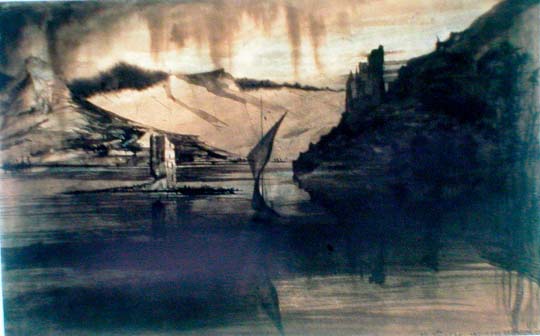Victor Hugo, La Tour des Rats, 1847
Victor Hugo (1802-1885) is of course one of the most famous French writers of all time, a towering figure of the Romantic movement. However, in addition to his novels, poetry, and plays, he was also a prolific visual artist. Hugo produced over 4,000 drawings, but kept it private for fear it would overshadow his literary work. He showed them only to family and close friends, and occasionally gave drawings as gifts. Hugo mostly viewed it as a casual hobby, but at certain times in his life it had more importance for him. Delacroix remarked that if Hugo had decided to pursue painting, he would have outshone all the artists of the century. In both style and execution, Hugo's drawings are startlingly modern. He employed pen-and-ink and charcoal, but he often applied charcoal with matchsticks or his fingers. He did not hesitate to incorporate stains and ink blots that his children made on the paper, and he sometimes added coffee grounds or soot to create the desired effect. It seems that a lack of formal training in drawing freed him from the conventions of French academicism, so that he was only committed to the actual appearance of the final image. And being a man of immense creativity, this approach allowed for some very unusual approaches. In these small drawings, Hugo preceded some of the innovations of Expressionism, Surrealism, and even Abstract Expressionism. He demonstrates incredible understanding of the expression of form and shading, using color only sparingly to enhance his images. This drawing of the Tower of Rats (which has a rather gruesome story behind it) is an incredibly intense and expressive image of the Rhine. A sepia version of the scene has more discernible details. There is great darkness and drama here, engendering deep trepidation and reflection.

No comments:
Post a Comment